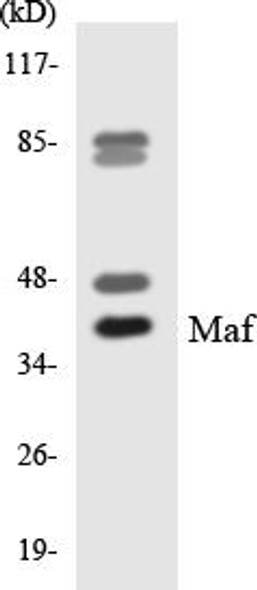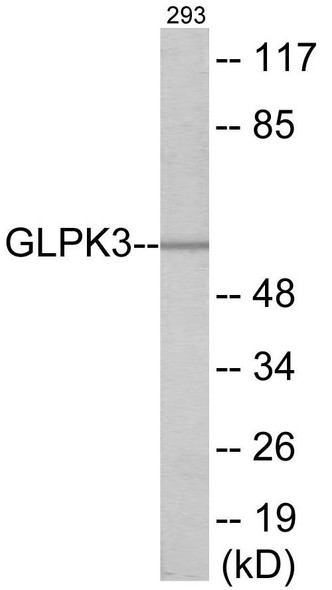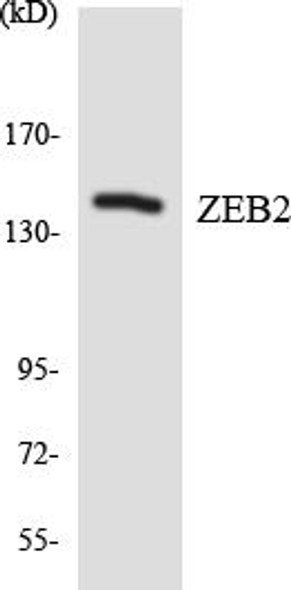SPI1 Colorimetric Cell-Based ELISA
- SKU:
- CBCAB00981
- Product Type:
- ELISA Kit
- ELISA Type:
- Cell Based
- Research Area:
- Epigenetics and Nuclear Signaling
- Reactivity:
- Human
- Mouse
- Rat
- Detection Method:
- Colorimetric
Description
SPI1 Colorimetric Cell-Based ELISA
The SPI1 Colorimetric Cell-Based ELISA Kit is a powerful tool for measuring the activity of SPI1, a key transcription factor involved in regulating cell differentiation and immune responses. This kit is specifically designed for use in cell-based assays, allowing for the direct measurement of SPI1 activity within cell lysates.With high sensitivity and accuracy, the SPI1 Colorimetric Cell-Based ELISA Kit provides reliable and reproducible results, making it ideal for studying the role of SPI1 in various biological processes.
Whether investigating immune cell differentiation, inflammation, or hematopoiesis, this kit offers a convenient and effective solution for researchers in the fields of immunology, oncology, and beyond.Overall, the SPI1 Colorimetric Cell-Based ELISA Kit offers a valuable tool for uncovering the molecular mechanisms underlying immune cell function and differentiation, opening up new possibilities for therapeutic interventions and drug development.
| Product Name: | SPI1 Colorimetric Cell-Based ELISA |
| Product Code: | CBCAB00981 |
| ELISA Type: | Cell-Based |
| Target: | SPI1 |
| Reactivity: | Human, Mouse, Rat |
| Dynamic Range: | > 5000 Cells |
| Detection Method: | Colorimetric 450 nmStorage/Stability:4°C/6 Months |
| Format: | 96-Well Microplate |
The SPI1 Colorimetric Cell-Based ELISA Kit is a convenient, lysate-free, high throughput and sensitive assay kit that can detect SPI1 protein expression profile in cells. The kit can be used for measuring the relative amounts of SPI1 in cultured cells as well as screening for the effects that various treatments, inhibitors (ie siRNA or chemicals), or activators have on SPI1.
Qualitative determination of SPI1 concentration is achieved by an indirect ELISA format. In essence, SPI1 is captured by SPI1-specific primary antibodies while the HRP-conjugated secondary antibodies bind the Fc region of the primary antibody. Through this binding, the HRP enzyme conjugated to the secondary antibody can catalyze a colorimetric reaction upon substrate addition. Due to the qualitative nature of the Cell-Based ELISA, multiple normalization methods are needed:
| 1. | A monoclonal antibody specific for human GAPDH is included to serve as an internal positive control in normalizing the target absorbance values. |
| 2. | Following the colorimetric measurement of HRP activity via substrate addition, the Crystal Violet whole-cell staining method may be used to determine cell density. After staining, the results can be analysed by normalizing the absorbance values to cell amounts, by which the plating difference can be adjusted. |
| Database Information: | Gene ID: 6688, UniProt ID: P17947, OMIM: 165170, Unigene: Hs.502511 |
| Gene Symbol: | SPI1 |
| Sub Type: | None |
| UniProt Protein Function: | PU.1: Binds to the PU-box, a purine-rich DNA sequence (5'- GAGGAA-3') that can act as a lymphoid-specific enhancer. This protein is a transcriptional activator that may be specifically involved in the differentiation or activation of macrophages or B- cells. Also binds RNA and may modulate pre-mRNA splicing. Binds DNA as a monomer. Interacts with CEBPD and NONO. Interacts with RUNX1 and SPIB. Interacts with GFI1; the interaction represses SPI1 transcriptional activity. Highly expressed in both FV-P and FV-A-induced erythro- leukemia cell lines that have undergone rearrangements of the Spi- 1 gene due to the insertion of SFFV. Belongs to the ETS family. 2 isoforms of the human protein are produced by alternative splicing. |
| UniProt Protein Details: | Protein type:DNA-binding; Transcription factor; Oncoprotein Chromosomal Location of Human Ortholog: 11p11.2 Cellular Component: nuclear chromatin Molecular Function:NFAT protein binding; protein binding; RNA binding; RNA polymerase II transcription factor activity, enhancer binding; transcription factor activity Biological Process: anatomical structure regression; cell differentiation; erythrocyte differentiation; granulocyte differentiation; lymphocyte differentiation; lymphoid progenitor cell differentiation; macrophage differentiation; myeloid dendritic cell differentiation; negative regulation of gene expression, epigenetic; negative regulation of MHC class II biosynthetic process; negative regulation of transcription from RNA polymerase II promoter; negative regulation of transcription, DNA-dependent; positive regulation of transcription from RNA polymerase II promoter; positive regulation of transcription, DNA-dependent; regulation of erythrocyte differentiation; somatic stem cell maintenance; transcription from RNA polymerase II promoter |
| NCBI Summary: | This gene encodes an ETS-domain transcription factor that activates gene expression during myeloid and B-lymphoid cell development. The nuclear protein binds to a purine-rich sequence known as the PU-box found near the promoters of target genes, and regulates their expression in coordination with other transcription factors and cofactors. The protein can also regulate alternative splicing of target genes. Multiple transcript variants encoding different isoforms have been found for this gene. [provided by RefSeq, Jul 2008] |
| UniProt Code: | P17947 |
| NCBI GenInfo Identifier: | 60415923 |
| NCBI Gene ID: | 6688 |
| NCBI Accession: | P17947.2 |
| UniProt Secondary Accession: | P17947,P17433, Q6BDS1, |
| UniProt Related Accession: | P17947 |
| Molecular Weight: | 31,211 Da |
| NCBI Full Name: | Transcription factor PU.1 |
| NCBI Synonym Full Names: | Spi-1 proto-oncogene |
| NCBI Official Symbol: | SPI1 |
| NCBI Official Synonym Symbols: | OF; PU.1; SFPI1; SPI-1; SPI-A |
| NCBI Protein Information: | transcription factor PU.1 |
| UniProt Protein Name: | Transcription factor PU.1 |
| UniProt Synonym Protein Names: | 31 kDa-transforming protein |
| Protein Family: | Transcription factor |
| UniProt Gene Name: | SPI1 |
| UniProt Entry Name: | SPI1_HUMAN |
| Component | Quantity |
| 96-Well Cell Culture Clear-Bottom Microplate | 2 plates |
| 10X TBS | 24 mL |
| Quenching Buffer | 24 mL |
| Blocking Buffer | 50 mL |
| 15X Wash Buffer | 50 mL |
| Primary Antibody Diluent | 12 mL |
| 100x Anti-Phospho Target Antibody | 60 µL |
| 100x Anti-Target Antibody | 60 µL |
| Anti-GAPDH Antibody | 60 µL |
| HRP-Conjugated Anti-Rabbit IgG Antibody | 12 mL |
| HRP-Conjugated Anti-Mouse IgG Antibody | 12 mL |
| SDS Solution | 12 mL |
| Stop Solution | 24 mL |
| Ready-to-Use Substrate | 12 mL |
| Crystal Violet Solution | 12 mL |
| Adhesive Plate Seals | 2 seals |
The following materials and/or equipment are NOT provided in this kit but are necessary to successfully conduct the experiment:
- Microplate reader able to measure absorbance at 450 nm and/or 595 nm for Crystal Violet Cell Staining (Optional)
- Micropipettes with capability of measuring volumes ranging from 1 µL to 1 ml
- 37% formaldehyde (Sigma Cat# F-8775) or formaldehyde from other sources
- Squirt bottle, manifold dispenser, multichannel pipette reservoir or automated microplate washer
- Graph paper or computer software capable of generating or displaying logarithmic functions
- Absorbent papers or vacuum aspirator
- Test tubes or microfuge tubes capable of storing ≥1 ml
- Poly-L-Lysine (Sigma Cat# P4832 for suspension cells)
- Orbital shaker (optional)
- Deionized or sterile water
*Note: Protocols are specific to each batch/lot. For the correct instructions please follow the protocol included in your kit.
| Step | Procedure |
| 1. | Seed 200 µL of 20,000 adherent cells in culture medium in each well of a 96-well plate. The plates included in the kit are sterile and treated for cell culture. For suspension cells and loosely attached cells, coat the plates with 100 µL of 10 µg/ml Poly-L-Lysine (not included) to each well of a 96-well plate for 30 minutes at 37°C prior to adding cells. |
| 2. | Incubate the cells for overnight at 37°C, 5% CO2. |
| 3. | Treat the cells as desired. |
| 4. | Remove the cell culture medium and rinse with 200 µL of 1x TBS, twice. |
| 5. | Fix the cells by incubating with 100 µL of Fixing Solution for 20 minutes at room temperature. The 4% formaldehyde is used for adherent cells and 8% formaldehyde is used for suspension cells and loosely attached cells. |
| 6. | Remove the Fixing Solution and wash the plate 3 times with 200 µL 1x Wash Buffer for five minutes each time with gentle shaking on the orbital shaker. The plate can be stored at 4°C for a week. |
| 7. | Add 100 µL of Quenching Buffer and incubate for 20 minutes at room temperature. |
| 8. | Wash the plate 3 times with 1x Wash Buffer for 5 minutes each time. |
| 9. | Add 200 µL of Blocking Buffer and incubate for 1 hour at room temperature. |
| 10. | Wash 3 times with 200 µL of 1x Wash Buffer for 5 minutes each time. |
| 11. | Add 50 µL of 1x primary antibodies (Anti-SPI1 Antibody and/or Anti-GAPDH Antibody) to the corresponding wells, cover with Parafilm and incubate for 16 hours (overnight) at 4°C. If the target expression is known to be high, incubate for 2 hours at room temperature. |
| 12. | Wash 3 times with 200 µL of 1x Wash Buffer for 5 minutes each time. |
| 13. | Add 50 µL of 1x secondary antibodies (HRP-Conjugated AntiRabbit IgG Antibody or HRP-Conjugated Anti-Mouse IgG Antibody) to corresponding wells and incubate for 1.5 hours at room temperature. |
| 14. | Wash 3 times with 200 µL of 1x Wash Buffer for 5 minutes each time. |
| 15. | Add 50 µL of Ready-to-Use Substrate to each well and incubate for 30 minutes at room temperature in the dark. |
| 16. | Add 50 µL of Stop Solution to each well and read OD at 450 nm immediately using the microplate reader. |
(Additional Crystal Violet staining may be performed if desired – details of this may be found in the kit technical manual.)










